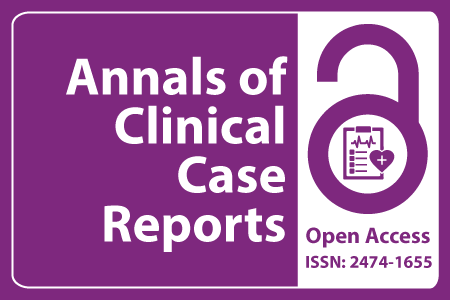
Journal Basic Info
- Impact Factor: 1.809**
- H-Index: 6
- ISSN: 2474-1655
- DOI: 10.25107/2474-1655
Major Scope
- Trauma
- Nuclear Medicine
- Gastric Cancer
- Vascular Medicine
- Nutrition and Food Science
- Oncology Cases
- Sports Medicine
- Dentistry and Oral Biology
Abstract
Citation: Ann Clin Case Rep. 2022;7(1):2140.DOI: 10.25107/2474-1655.2140
Effect of Mold Exposure during Pregnancy on the Development of Offspring’s Atopic Dermatitis
Kil Yong Choi1, Eun Lee2, Wondeuk JO3, Wonho Yang4, Chae-Kwan Lee5, Hyung Jin Jeon6, Mi- Jin Kang7 and Soo-Jong Hong7*
1Department of Environmental Energy Engineering, Anyang University, Republic of Korea 2Department of Pediatrics, Chonnam National University Hospital, Chonnam National University Medical School, Republic of Korea 3NCL Corp, Republic of Korea 4Department of Occupational Health, Catholic University of Daegu, Republic of Korea 5Department of Occupation and Environmental Medicine, Busan Paik Hospital, Inje University, Republic of Korea 6Division for Land Policy Assessment, Environmental Assessment Group, Korea Environmental Institute, Republic of Korea 7Department of Pediatrics, Childhood Asthma Atopy Center, Humidifier Disinfectant Health Center, Asan Medical Center, University of Ulsan College of Medicine, South Korea
*Correspondance to: Soo-Jong Hong
PDF Full Text Research Article | Open Access
Abstract:
Atopic dermatitis is one of the most common chronic skin diseases. Infantile atopic dermatitis may be caused, in particular, by exposure to indoor environmental factors during gestation and infancy; however, the underlying mechanism is unknown. A total of 2,609 healthy newborns who were enrolled in the COCOA study (COCOA) from 2008 to 2015 were surveyed for indoor environmental exposure to fungi during gestation and then diagnosed postnatally for atopic dermatitis. Fungal microorganisms were analyzed in house dust samples collected during gestation and their relationship was investigated. A total of 2,609 respondents were surveyed (52.8% male and 47.2% female) Children, 1, 2, and 3 years old diagnosed with atopic dermatitis comprised 15.2%, 15.7%, and 14.1% of the respondents, respectively. The prevalence of exposure to mold during gestation was 1.46 (95% CI, 1.05-2.04) and 1.52 (95% CI, 0.95-2.43), in the first and third years after birth, respectively. One-year-old children with atopic dermatitis and no fungal markers detected in the bathroom environment during gestation accounted for less than 5% (aOR, 1.51; 95% CI, 0.96-2.38). Exposure to indoor fungi during gestation and infancy is associated with the development of atopic dermatitis in children. Future research will be necessary to establish the underlying mechanisms.
Keywords:
Atopic dermatitis; Indoor environment; Mold; Pregnancy; Child
Cite the Article:
Choi KY, Lee E, Wondeuk JO, Yang W, Lee C-K, Jeon HJ, et al. Effect of Mold Exposure during Pregnancy on the Development of Offspring’s Atopic Dermatitis. Ann Clin Case Rep. 2022; 7: 2140..













